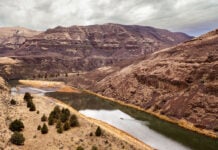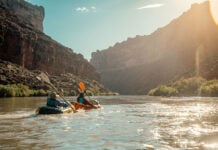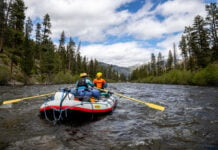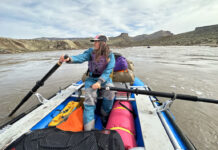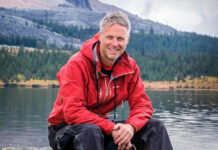Turn your fantasies into reality. We consulted the experts and picked the best paddling pursuits average kayakers can actually pull off.
From touring with giants to taming the surf, here are 14 ways to plan your greatest kayaking adventure ever.
1. Learn to predict the weather
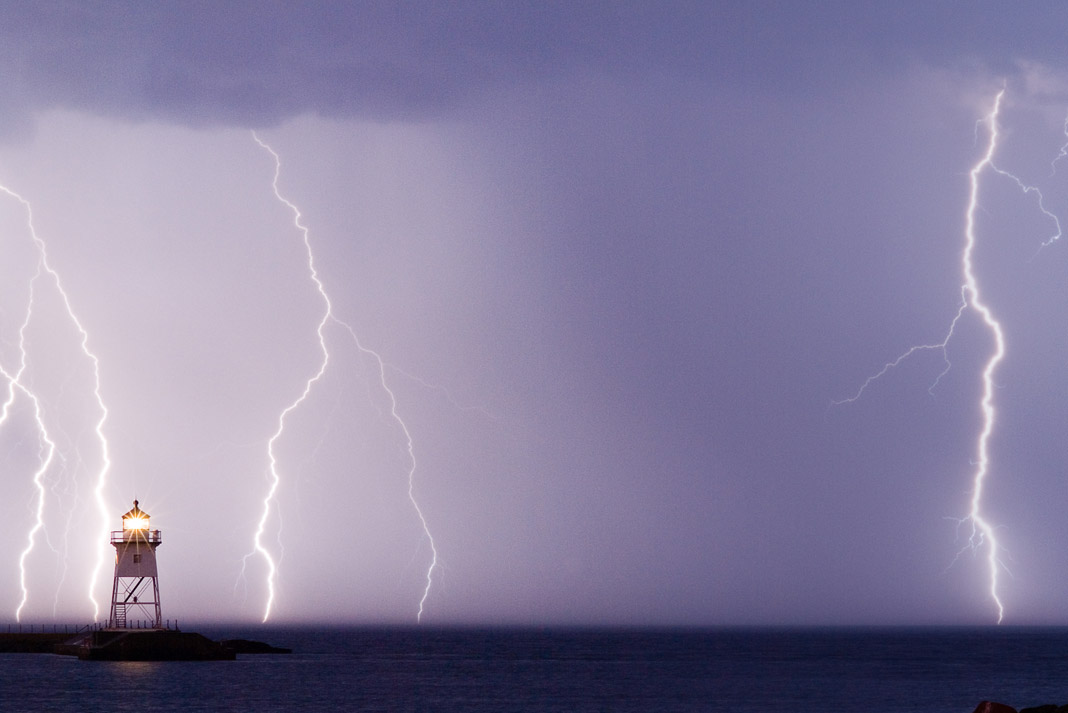
The Dream: Anyone can download a weather app on her smartphone. But to forecast accurately beyond the last cell tower, you need a basic understanding of weather systems, local patterns and interactions with shoreline geography in your paddling area.
The Plan: Developing your weather eye is a skill you can hone from the comfort of your couch. Combine readings on weather theory with observations made from your backyard and boat. The key is paying attention for several days at a stretch, so you can recognize patterns: changes in temperature, pressure, wind direction and cloud cover. An excellent resource for coastal kayakers is Navigation, Sea State & Weather: A Paddler’s Manual, published by SKILS. This Vancouver Island-based sea kayak school also offers weather interpretation workshops (www.skils.ca).
2. Turn Your Paddle Into Art
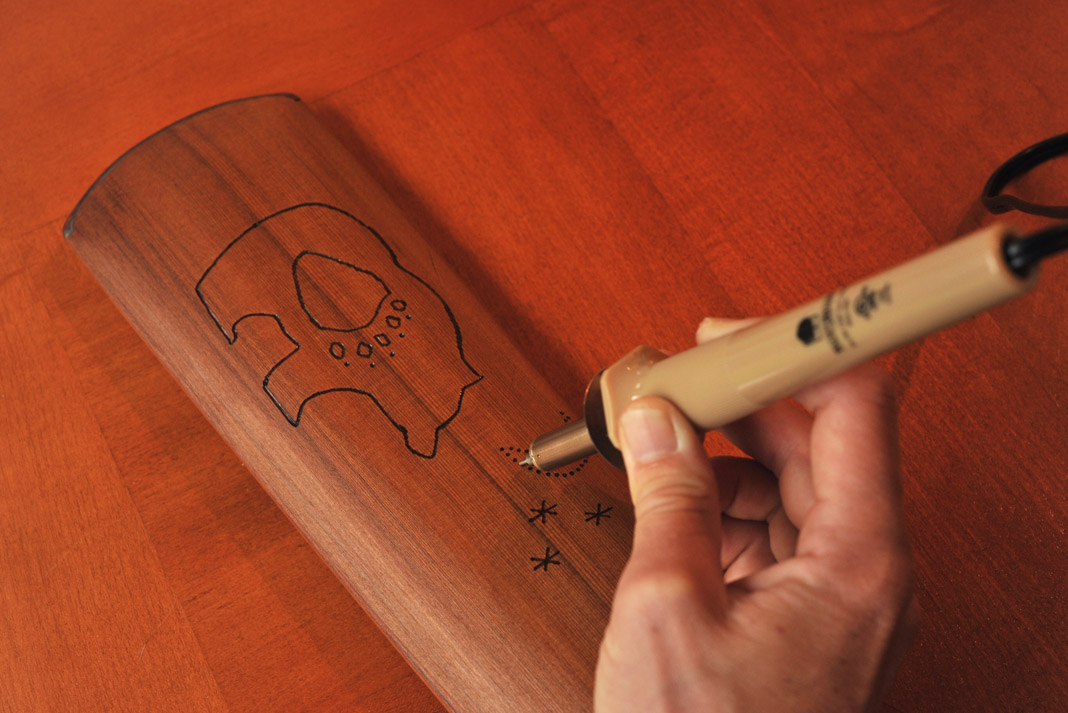
The Dream: There are few expressions of form meeting function as elegant as a well-crafted paddle (the Jaguar E-Type and Apple iPhone are also on our shortlist). Make your wood blade truly one-of-a-kind by scribing a design, date or inspirational passage into its richly textured grain.
The Plan: If your paddle is finished with varnish or oil, sand the area first. With a pencil, sketch your design onto the wood, and consider stenciling letters unless you have a surgeon’s steady hand. Use a woodburning tool with a fine point for detail work ($16.99, www.walnuthollow.com)—it’s basically a Sharpie with a 950°F tip. Be sure to practice on a similar piece of scrap wood to avoid pyrographer’s remorse.
3. Feast On Wild Edibles
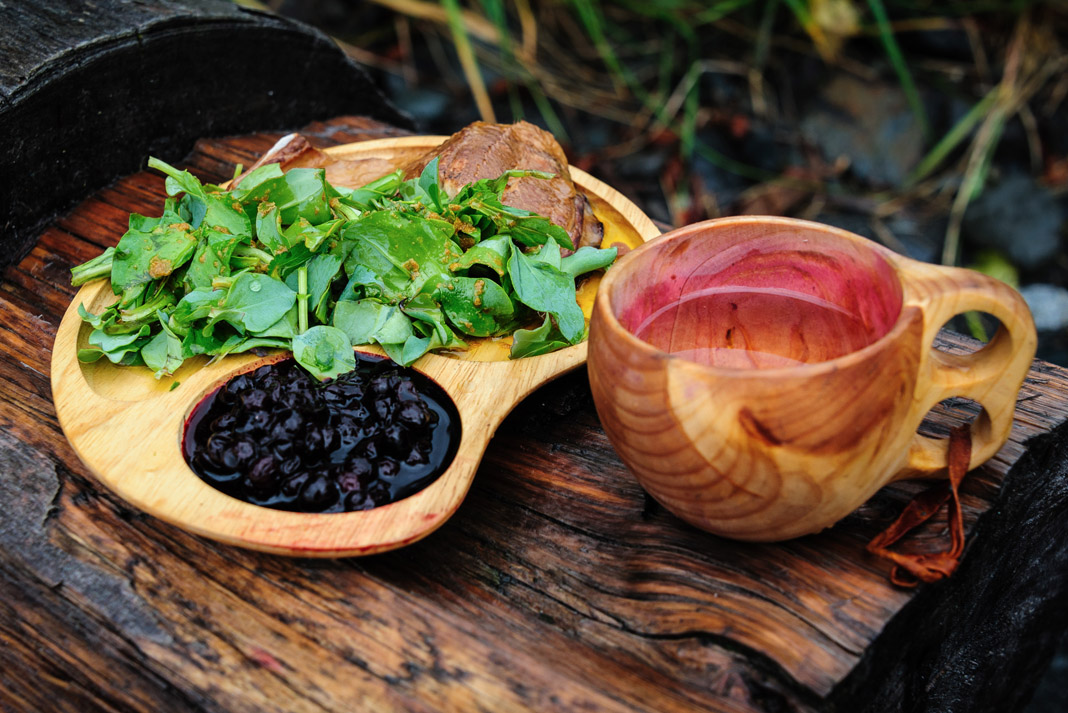
The Dream: During the short Alaskan summer, coastal areas can offer a veritable buffet of beach greens, kelp, berries, mushrooms, fish and seafood. Expert gourmet foragers and Palmer, Alaska, locals Nancy Pfeiffer and Fredrik Norrsell spend up to three months of the year living off the land (see some of their favorite recipes at www.paddlingmag.com/0015). The couple loads their kayaks with spices, oil, tackle and shrimp pots for their subsistence paddling trips in the Panhandle and Prince William Sound. “It puts me in awe of the earth’s abundance,” says Pfeiffer.
“By eating wild foods, we are intimately linked to the world around us.”
The Plan: Aim to augment— rather than replace—your standard meal plan for your initial foraging adventures. Bring a comprehensive field guide; we like the color photographs, nutrition summaries and recipe ideas inAlaska’s Wild Plants: A Guide to Alaska’s Edible Harvest. For further inspiration, watch for Pfeiffer and Norrsell’s upcoming book detailing their recent 566-nautical mile subsistence kayak journey through southeast Alaska, including mouthwatering photos and recipes (www. nancypfeiffer.com).
4. Kayak Surfing

The Dream: There’s no better way to learn humility—and stability—in a sea kayak than steering your bow toward shore and waiting for the swell to rise under your stern. Catch the first wave and you’ll have a smile on your face for days. Need help? Let Ginni Callaghan and her team of crack coaches at Sea Kayak Baja Mexico guide you to some of the best waves on the Pacific Coast.
The Plan: Sign up for Callaghan’s next Baja Surf Camp in spring 2020. Held in mid-April, the weeklong event is a celebration of surf, starkly beautiful landscapes, beach life and delicious local cuisine. The camp’s rustic palapas overlook a remote point break where the swell wraps into the bay and is groomed into smooth peelers—ideal waves for aspiring longboat surfers. “We can handle a variety of skill levels,” says Callaghan. “If you know what a brace is and can paddle in 15-knot wind with waves of two to three feet, you’re welcome to join us.” www.seakayakbajamexico.com
5. Build A DIY Gear Cave
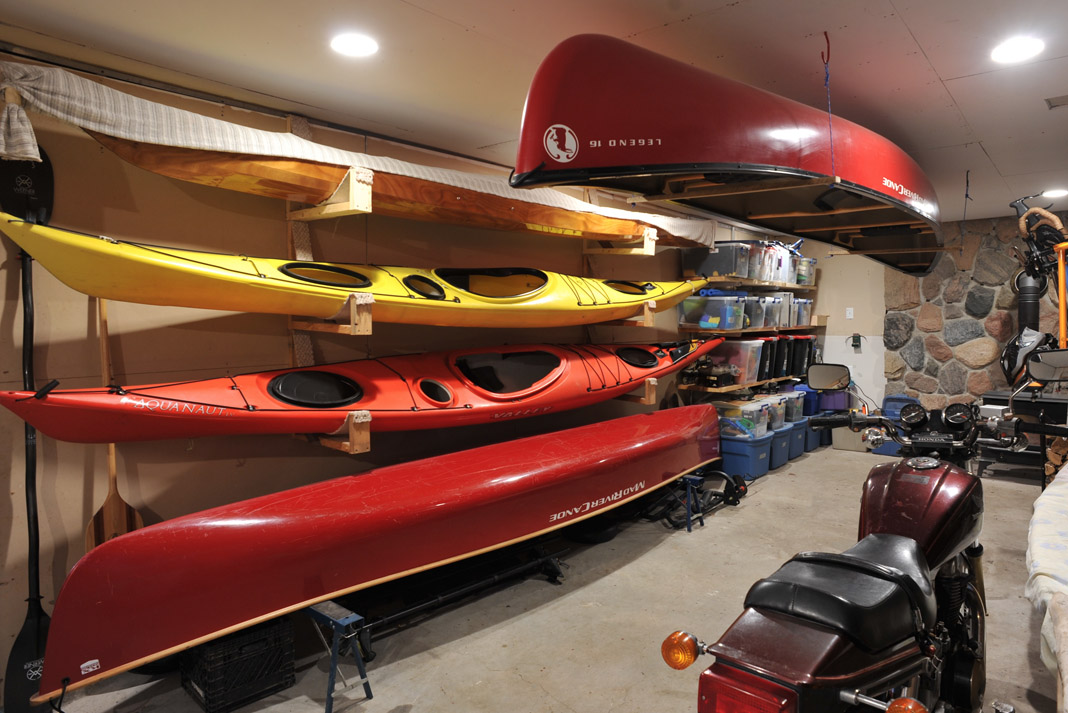
The Dream: Keep boats, boards, paddles, tents and bikes organized and out of the elements. Making space for your toys inside the home extends their life and—more importantly—puts them within easy reach for spontaneous grab-and-go adventures.
The Plan: You’ll need an indoor area a few feet longer than your longest boat. A walkout basement, garage or workshop is ideal. Maximize vertical storage along walls and leave the center of the room open for easy ins and outs, boat repairs and other projects.
Shelving systems utilizing a hang rail and slotted uprights are adjustable and sturdy—perfect for storing heavy gear totes. Next, construct a paddle rack using only a couple strips of plywood and a jigsaw to scribe cutouts for the shafts to rest on. Having trouble visualizing this design? Browse Pinterest for inspiration. Finally, build wall-mounted cradles to park up to four boats per wall. Each pair of L-shaped cradles requires eight to
10 feet of 2×4, a handful of screws, and two four-inch-wide strips of carpet. Tweak the dimensions of your L’s to suit your boats—about 21 inches high by 20 inches deep for kayaks measuring less than 23 inches wide.
6. Take Better Trip Photos
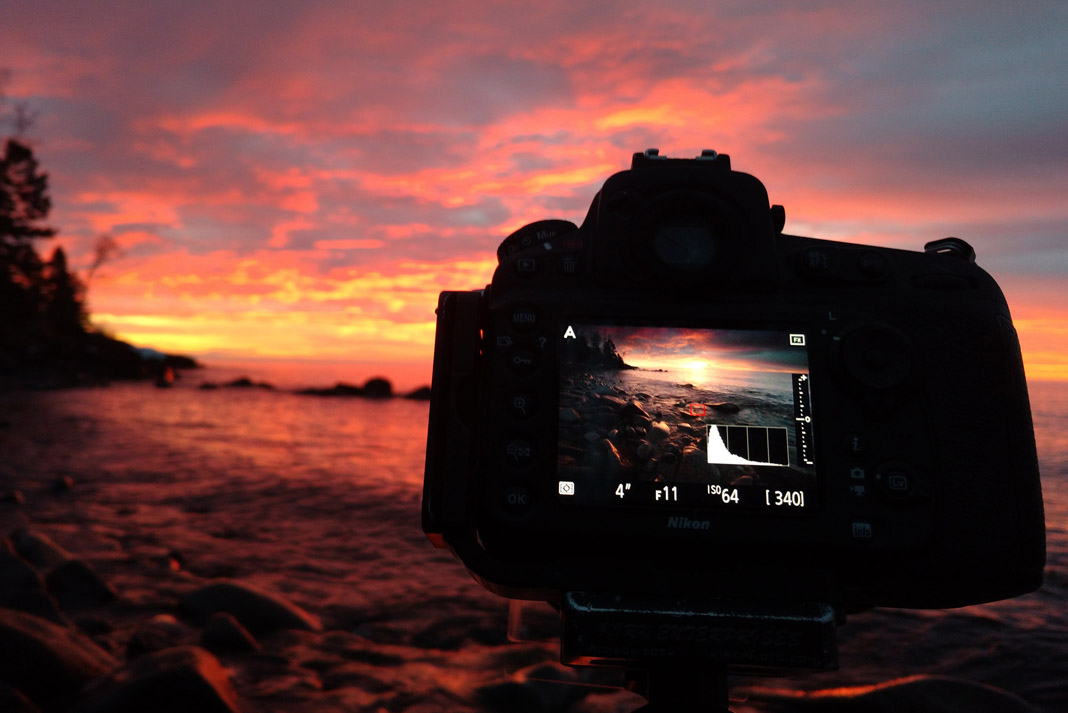
The Dream: Go beyond the bow shot. Capture images evoking the stillness and wildness of why we paddle— whether it’s incredible wildlife close-ups, stunning night skies, breathtaking landscapes or heart-pounding action.
The Plan: Stop salivating over Instagram feeds and step up your own skills by shooting with a professional. Lake Superior’s diverse seasons and moods create an ever-changing artistic milieu, while the plethora of water trails, parks and rugged coastline are a paddler’s paradise. Grand Marais, Minnesota-based photographer and sea kayak guide, Bryan Hansel, offers a wide range of photography workshops focusing on the North Shore. Subjects for Hansel’s two-to five-day workshops include spring waterfalls, the Milky Way, autumn gales and, of course, Lake Superior kayak photography (www.bryanhansel.com).
7. Learn To Navigate By The Stars (Polynesian Wayfinding)
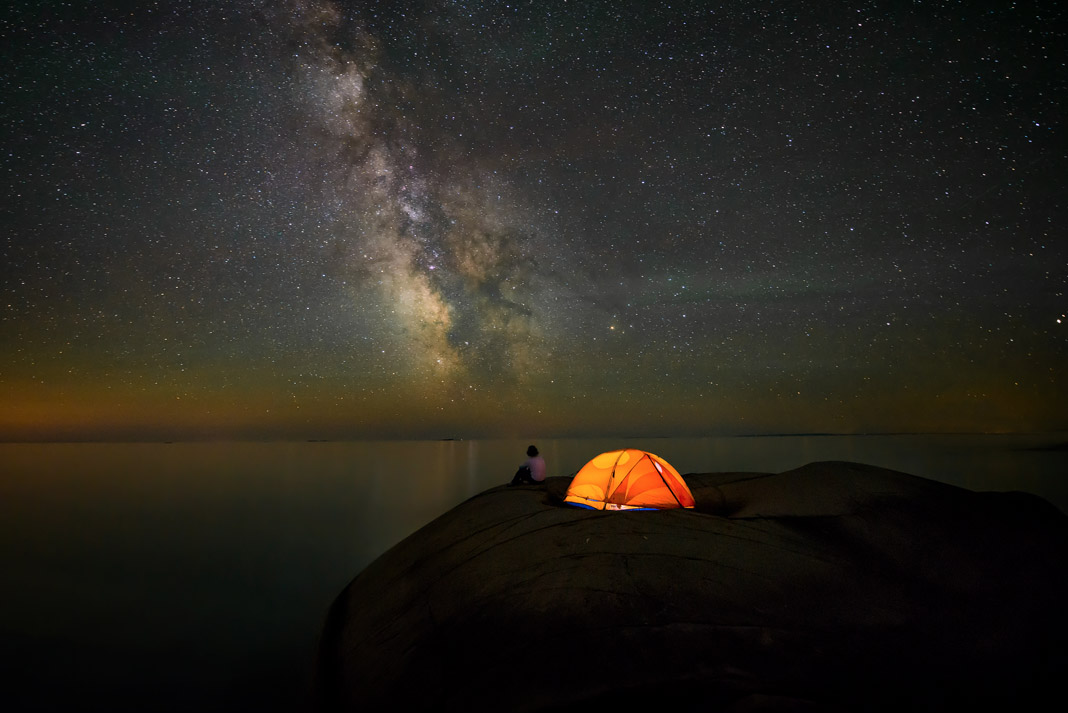
The Dream: Tap into the ancient Polynesian sea voyaging technique of wayfinding: use an outstretched hand, the horizon and the night sky to discern direction and latitude. This millennia-old skill offers modern paddlers a largely forgotten way of navigating— even if most of us never aspire to trans-oceanic journeys.
The Plan: Learn how to use star compasses, meridian pairs and star lines to find cardinal directions and hold a course without any tools aside from your own hands. Here’s an easy exercise to get you started. First, locate the constellation Ursa Major, commonly known as The Big Dipper. Follow the line created by the Dipper’s pointer stars—the two stars forming the side of the bowl opposite the handle—and extend it 25 degrees to find Polaris, called the North Star because it lies near the celestial north pole. Measuring degrees is simple: hold your hand at arm’s length from your face.
Raise your little finger; the width of the tip is about one degree. Your three middle fingers measure five degrees; your clenched fist equals 10 degrees; your outstretched hand from thumb to little finger, 20 degrees. Now use your hand to measure Polaris’ distance from the horizon—this is your northerly latitude. Intrigued? Head to the website of the Polynesian Voyaging Society (www.hokulea.com) for a wealth more information on non-instrument navigation.
8. Get Fishy And Catch Your Dinner
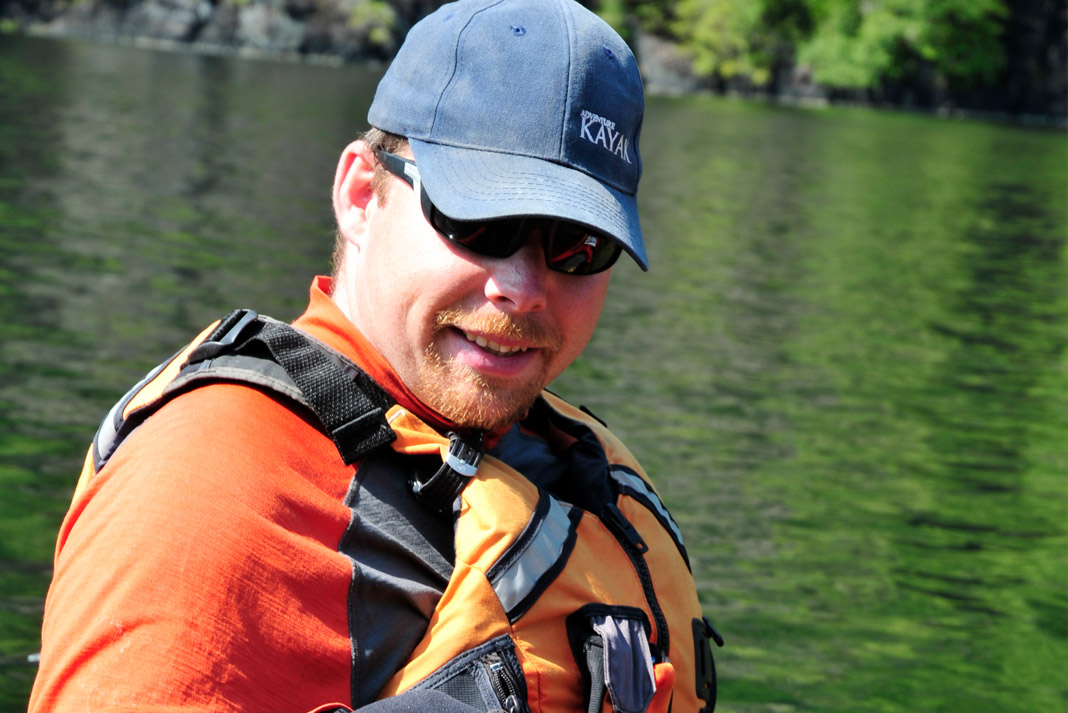
The Dream: Kayak fishing has blown up in the last decade, with reams of dedicated boats and gear to woo would-be anglers. But don’t trade in your sea kayak for a sit-on-top fishing sled just yet. Learn from the experts to snag supper without sacrificing touring efficiency.
The Plan: The handline is a compact, effective tool for trolling and jigging. Inuit and Aleut hunters pioneered kayak fishing centuries ago using this simple combination of spool and line. Get expert tips and build your own handline rig using our plans (www.paddlingmag. com/0016). For hands-on coaching set against the spectacular backdrop of northern California’s Redwood Coast, join Jason Self, avid kayak angler and owner of Kayak Trinidad. Self’s one-day workshops include all the gear needed to target rockfish, lingcod, cabezon and salmon ($150/person, www.kayaktrinidad.com).
9. African Kayak Safari
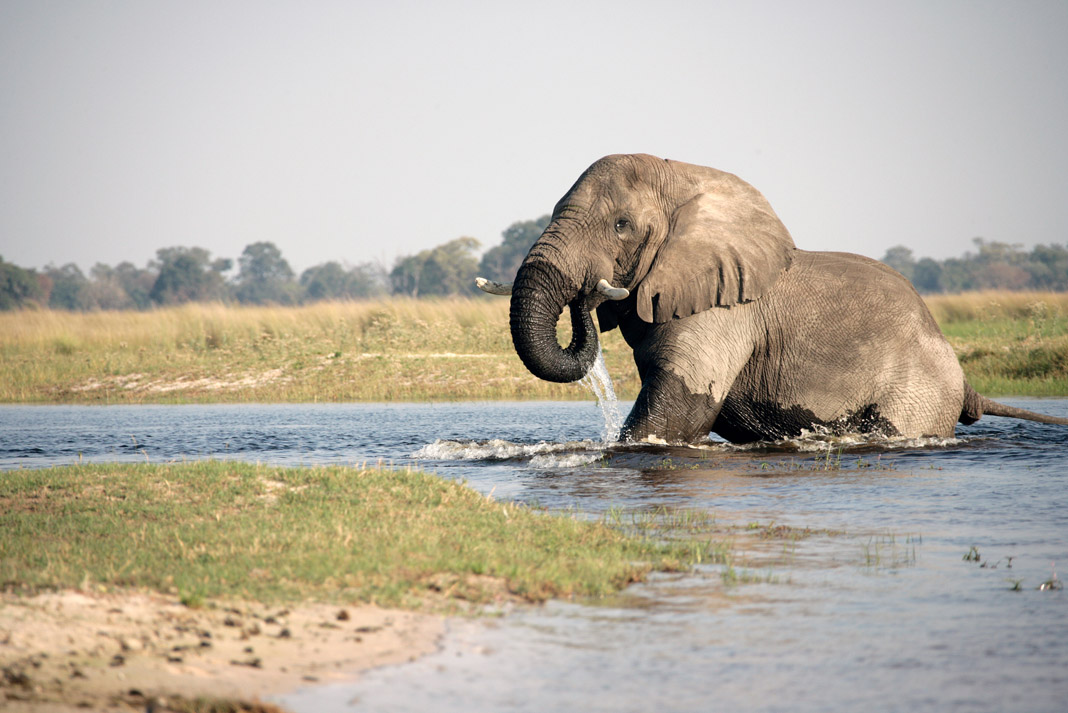
Why You Should Go: Botswana’s Okavango Delta is a natural wildlife funnel, drawing an extraordinary diversity and abundance of animals to its life-sustaining waters during the dry season. A multi-day kayaking safari offers the chance for quiet, small group wildlife watching—from observing hippo and giraffes to visiting Chief’s Island, a magnet for the Big Five: lions, leopards, rhino, buffalo and elephants.
Logistics: Dominating the central Delta, the vast floodplains and channels of the Moremi Game Reserve surround Chief’s Island and provide passage for paddlers. Kayaktive Adventure Safaris’ knowledgeable guides lead luxury camping trips from two to 10 days through the heart of the Reserve. During the early part of the winter dry season—from May to August—the 10-day trans Okavango journey traverses some 300 kilometers, guaranteeing fit, adventurous kayakers the wildlife trip of a lifetime. www. kayakbotswana.com
Price: $300–$2,300 USD
10. Visit And learn At The Canadian Canoe Museum
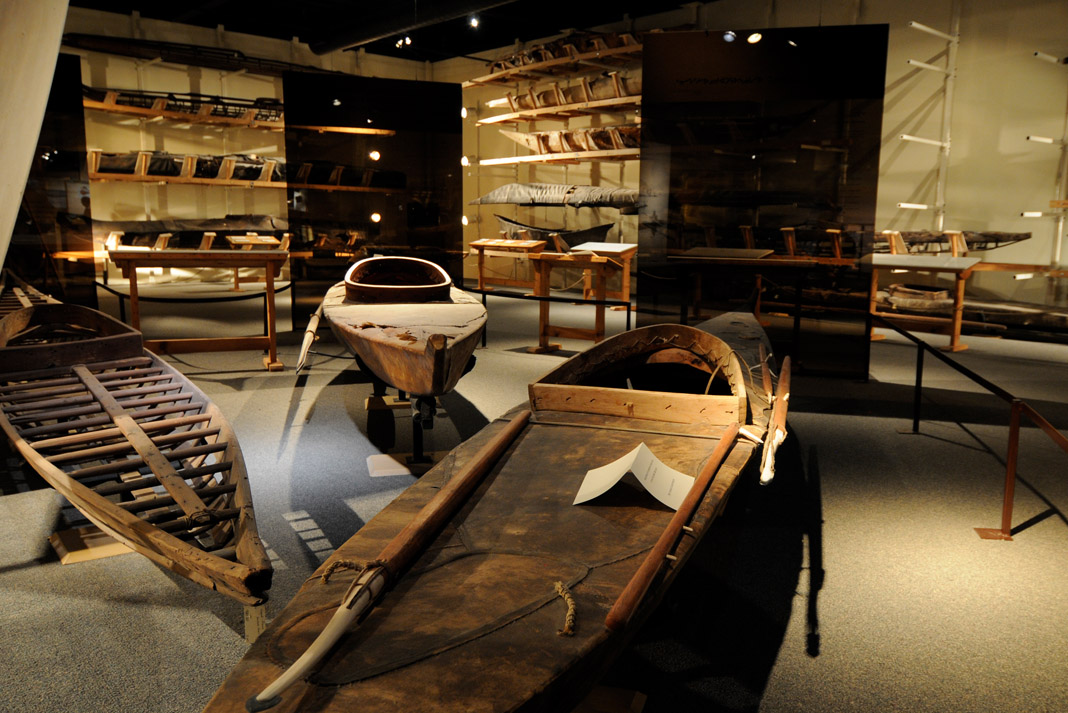
Why You Should Go: Currently housed in repurposed, 1960s-era factory buildings, the Canadian Canoe Museum doesn’t look like much from outside. But displayed inside the Peterborough, Ontario, gallery you’ll find traditional canoes and kayaks representing every coast of Canada and from as far away as Asia and the Amazon.
Logistics: This is the perfect time to show your support; a $65M fundraising campaign is underway for development of the museum’s new home astride the city’s historic Trent Severn Waterway. Construction on the 83,000-square-foot, LEED-certified building—designed to emerge from a natural drumlin, complete with living roof and serpentine glass walls overlooking the canal—is expected to begin later this year. When the facility opens in 2021, the museum will at last have a space befitting its world-class collection of 600-plus watercraft and thousands of artifacts, paddles and archives. www.canoemuseum.ca
Price: $12 CAD admission
11. Paddle With Giants And Explore Gwaii Haanas

Why You Should Go: Everything is bigger in Haida Gwaii. The remote archipelago’s seafood-scarfing black bears are a unique subspecies of their continental cousins—as well as being the largest of their kind anywhere, the island bears have massive heads and huge molars for chomping clams, crabs, sea urchins and mussels. And don’t forget the trees. Sitka spruce here dwarf the same trees on mainland British Columbia; the biggest boast circumferences of 50 feet and tower over 250 feet high.
Logistics: Haida Gwaii lies 100 kilometers off the coast of northern British Columbia. The southern portion of the island chain is protected as Gwaii Haanas National Park Reserve and Marine Conservation Area, consisting of more than 1,800 islands and islets and the waters surrounding them. Intermediate paddlers can enjoy a week of self-guided exploration in the sheltered passages between Lyell Island and Burnaby Narrows, utilizing water taxi services to access this northern part of the park.
Must-see sites include Tanu, Windy Bay and Hotspring Island where Watchmen—Haida First Nation men and women who look after these sacred spots—invite paddlers to view carved legacy poles and a traditional longhouse, stroll beautiful rainforest footpaths, and soak in the natural thermal pools. www.moresbyexplorers.com
Price: $450 CAD (transportation only)
12. Roll With The Best
Greenland National Kayaking Championship
Why You Should Go: Every July, the Greenland National Kayaking Championship celebrates traditional kayaking skills and the vital role of the qajaq in Greenlandic Inuit culture. The spirit of the weeklong event is one of community before competition—families travel from far-flung villages to reunite with friends and throw one heck of a party. On the icy waters, paddlers in handmade skin-on frame boats demonstrate their athleticism and accuracy in a series of contests ranging from sprint and endurance races to harpoon throwing and, of course, rolling.
Logistics: While most Championships relegate non-athletes to the role of spectator, the inclusive atmosphere of this event means anyone can join the competition—you’ll just need to bring (or borrow) a suitable kayak. Visitors compete in a separate division from locals and can’t vie for the championship crown, but the applause of the crowds is its own reward. To learn more, go to www.qajaqusa.org.
13. Join A Migration Of Pacific Gray Whales
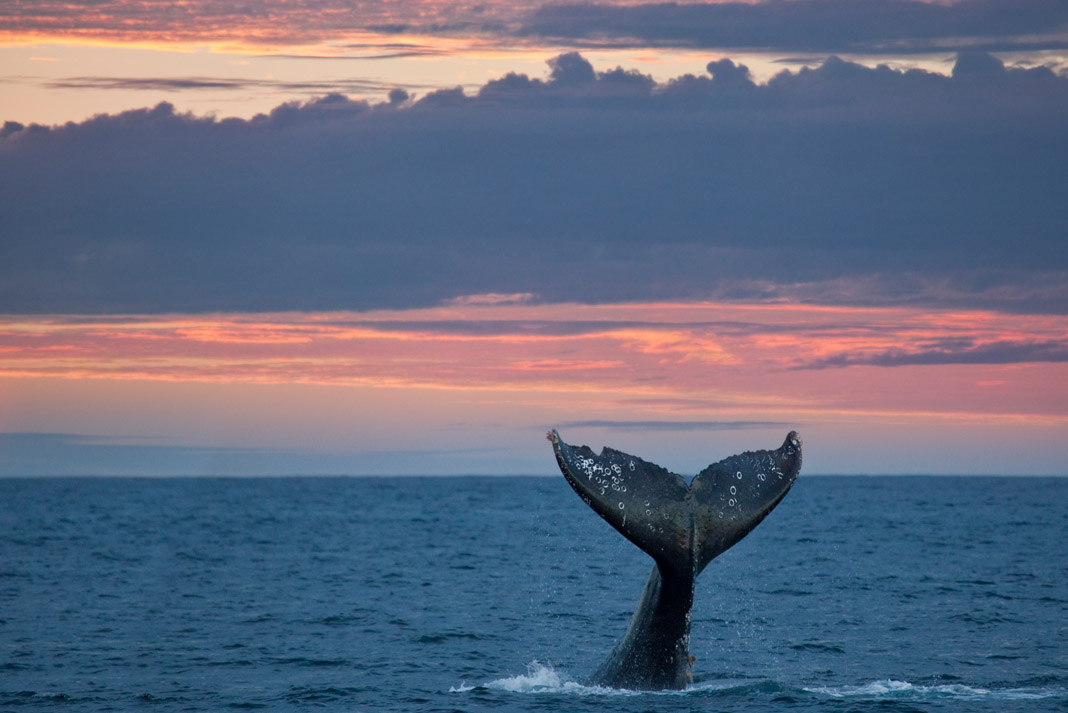
Why You Should Go: Each spring and fall, some 20,000 Pacific gray whales traverse the coast between their summer feeding grounds in the Bering and Chukchi seas, and their calving and wintering grounds in the warm-water lagoons of Baja. With a round trip distance of 10,000 to 14,000 miles, the whales’ journey is one of the longest migrations of any mammal on earth. These 30-ton giants prefer to stay within 2.5 miles of shore, making it easy for well-timed kayakers to join their pilgrimage.
Logistics: Gray whales cover around 75 miles per day, traveling at an average speed of five miles per hour. They are closest to shore—and easiest to spot—during their spring northward migration, which passes the nutrient-rich waters of Monterey Bay, California, in March, April and May. Paddle out of Davenport Landing (10 miles north of Santa Cruz) in early morning for prime whale-watching just a few hundred yards offshore. For kayak rentals and guided tours, contact Venture Quest (www.santacruzkayak.com).
Price: $75 USD
14. Set A Personal Record In The Yukon River Quest
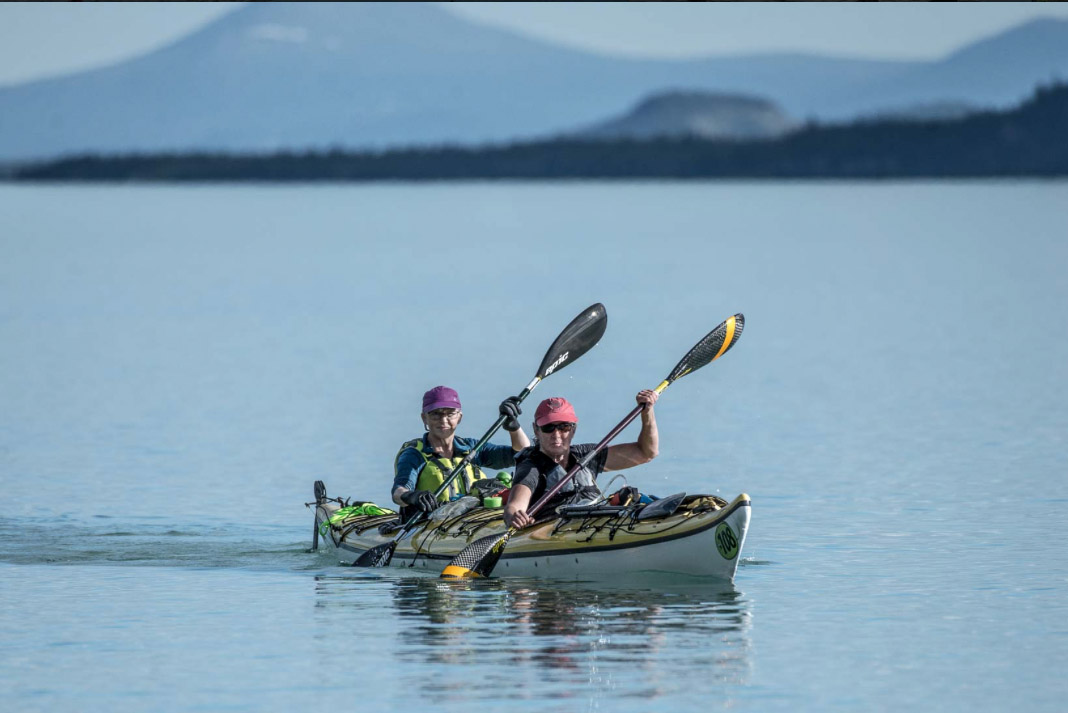
Why You Should Go: Develop the fitness and mental fortitude it takes to finish an epic like the Missouri River 340, Yukon River Quest or Race to Alaska. If you aspire to someday tackle one of these punishing multi-day challenges, dip your toes in the water first with
a suitably merciless half-or full-day race.
Logistics: The 750-mile Race to Alaska is beyond the reach (and inclination) of most mortals, but the first 40 miles out of Port Townsend, Washington, can be raced as a stand-alone sprint—on some of the biggest water in the whole course (www.r2ak.com). Race For The Rivers is an easier 40-miler down the Missouri River, couched in a fun river festival (www.racefortherivers.org). Billed as the longest single-day paddling race in the world, Ontario’s Muskoka River X traverses 130 kilometers on two rivers, three lakes and 20 portages—all in 23:59 or less. Or stick to daylight racing with a 58-kilometer sprint option (www.muskokariverx.com).
Price: $50–$400
Text and Feature photo: Virginia Marshall



